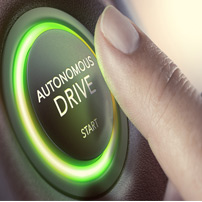Baltimore Car Accident Lawyers: Autonomous to Manual Driving
March 3, 2017 As companies like Tesla, Google, and others continue to perfect their autonomous car technology, researchers have been studying the cars’ safety issues, particularly when the driver is required to regain manual control of the vehicle. Researchers from Stanford University found that this transition period posed significant safety risks because of the amount of time it took the driver to make the necessary adjustments. This window of time made the vehicle, and the passengers inside, more vulnerable to car accidents.
As companies like Tesla, Google, and others continue to perfect their autonomous car technology, researchers have been studying the cars’ safety issues, particularly when the driver is required to regain manual control of the vehicle. Researchers from Stanford University found that this transition period posed significant safety risks because of the amount of time it took the driver to make the necessary adjustments. This window of time made the vehicle, and the passengers inside, more vulnerable to car accidents.
The 22 participants involved in the Stanford study test-drove autonomous cars on a closed track. The vehicles were specially designed for use in the study. As the driver took the car around the track, he or she was instructed to take over control of the car at various points in time. The researchers would then measure the amount of time it took each participant to appropriately react to the changing condition. Researchers measured factors like steering adaptation, speed changes, and varied movements including turning and lane changing.
Interestingly, even though the drivers were told in advance about which changes they could expect, there was still a significant transition period that presented a degree of concern to researchers. Overall, researchers found that the amount of time it took for drivers to react and make the necessary adjustments put the vehicle at risk for a wreck.
Reaction Times Raise Safety Questions
Participants of the study were asked to drive a 15-second course that had a straightaway and a lane change. When the vehicle was in the autonomous mode, it drove the course with no issues. Researchers measured drivers’ reactions when the car was in control, when the participant was in control, and during transition periods. Each participant drove the course 14 times. Researchers found the following results:
- Even when they were aware that there would be speed changes, the participants had a much more difficult time maneuvering smoothly when transitioning from autonomous driving to controlling the car on their own.
- None of the participants drove off course due to transitioning from autonomous to manual control, but the study study revealed periods of time when the driver would overcompensate their steering after taking over control of the car.
- The test vehicle allows researchers to test, but it does not represent all autonomous vehicles on the market. Ideally, all other models go through similar rigorous testing, including how drivers handle transitioning from autonomous to manual control.
Baltimore Car Accident Lawyers at LeViness, Tolzman & Hamilton Help Victims of Car Accidents
While autonomous cars are still being tested and their technology modified and improved, it is only a matter of time before these vehicles will be a common sight on roads and highways across the country. If you or a loved one is involved in a car accident involving a self-driving vehicle, resulting in serious injuries, contact the Baltimore car accident lawyers at LeViness, Tolzman & Hamilton as soon as possible. We will thoroughly investigate the details surrounding your accident and make sure that you receive the maximum financial compensation that you deserve. To schedule a free consultation, call us today at 800-547-4LAW (4529) or contact us online.
Our offices are located in Baltimore, Columbia, Glen Burnie, and Towson, Maryland, allowing us to represent car accident victims in Anne Arundel County, Carroll County, Harford County, Howard County, Montgomery County, Maryland’s Western Counties, Southern Maryland, and the Eastern Shore, as well as the communities of Catonsville, Essex, Halethorpe, Middle River, Rosedale, Gwynn Oak, Brooklandville, Dundalk, Pikesville, Nottingham, Windsor Mill, Lutherville, Timonium, Sparrows Point, Ridgewood, and Elkridge.






